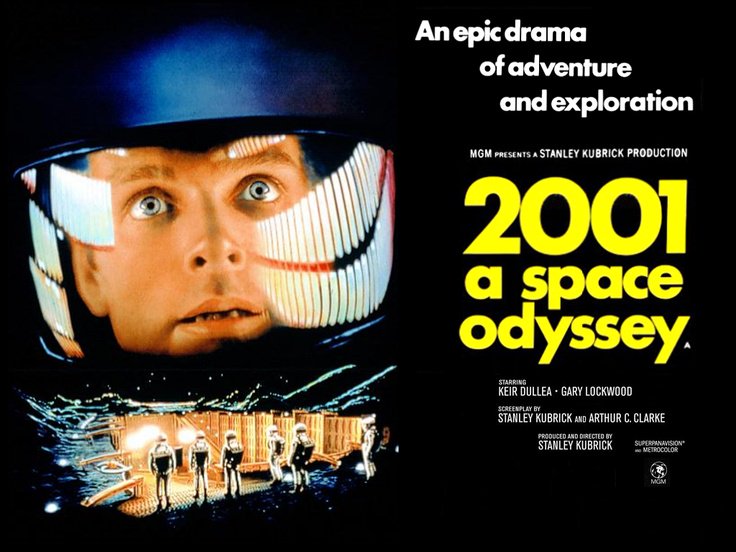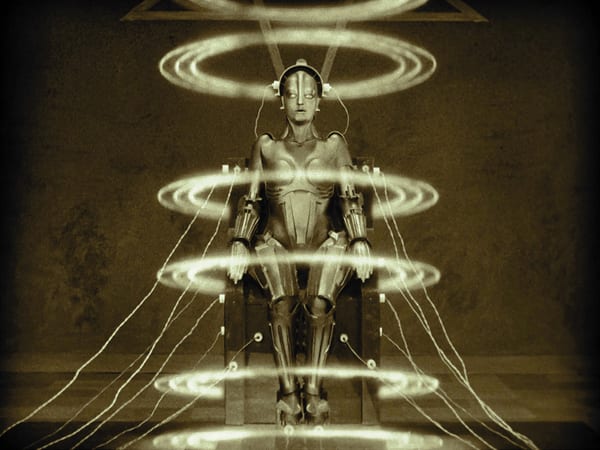2001: A SPACE ODYSSEY, 1968. Directed by Stanley Kubrick. Written by Arthur C. Clarke and Stanley Kubrick.
2001: A Space Odyssey is a 1968 science-fiction film. The film deals with thematic elements of human evolution, technology, artificial intelligence, and extraterrestrial life, and is notable for its scientific realism, pioneering special effects, ambiguous and often surreal imagery, sound in place of traditional narrative techniques, and minimal use of dialogue. In 1991, it was deemed “culturally, historically, or aesthetically significant” by the United States Library of Congress and selected for preservation in their National Film Registry.
(https://en.wikiquote.org/wiki/2001:_A_Space_Odyssey_(film))

2001: A Space Odyssey is one of Kubrick’s best-known films, both with regard to religious sentiments as well as on the spot on the future. The film, which started with images of a group of monkeys millions of years ago, emphasizes the fact that they are changing with a falling piece, and then they switch to a space vehicle.
In the beginning, nothing for eternity explodes for an indeterminate reason, and the entity is formed. Billions of years after this explosion, which still preserves the mystery today, Kubrick portrays György Ligeti’s mysterious Atmospheres overture instead of images of darkness that we can not even imagine that there is not a sudden opening of the material without entering the starting genre.
Kubrick’s focusing on the forms of the earth for a minute is due to his inability to look at these shapes for the first time. Because only then can the difference be understood. When the second leap takes place – these long historical leaps are an epoch in cinema history – Kubrick takes us to 4,000,000 years ago and translates his objective into Australopithecus. As we look at the history of evolution, we will see that the paths of Australopithecus will later be separated, and the first remote man of the modern man, Homo habilis, will emerge. Kubrick describes the emergence of Homo habilis with a tribe that touched the black monolithic obelisk and then climbed the evolutionary stages as Homo sapiens.
“Yet what’s even more impressive is the way 2001 anticipated current debates about the way we interact with technology. Killer computers are one thing, but the scene in which one of the astronauts lies in the spaceship, dressed only in white shorts and red goggles, impassively watching his parents’ video message to him is hugely poignant in its treatment of the now-familiar anxiety that while technology can seem to bring us together, in other ways it alienates us even more. Alex Needham (https://www.theguardian.com/)”


